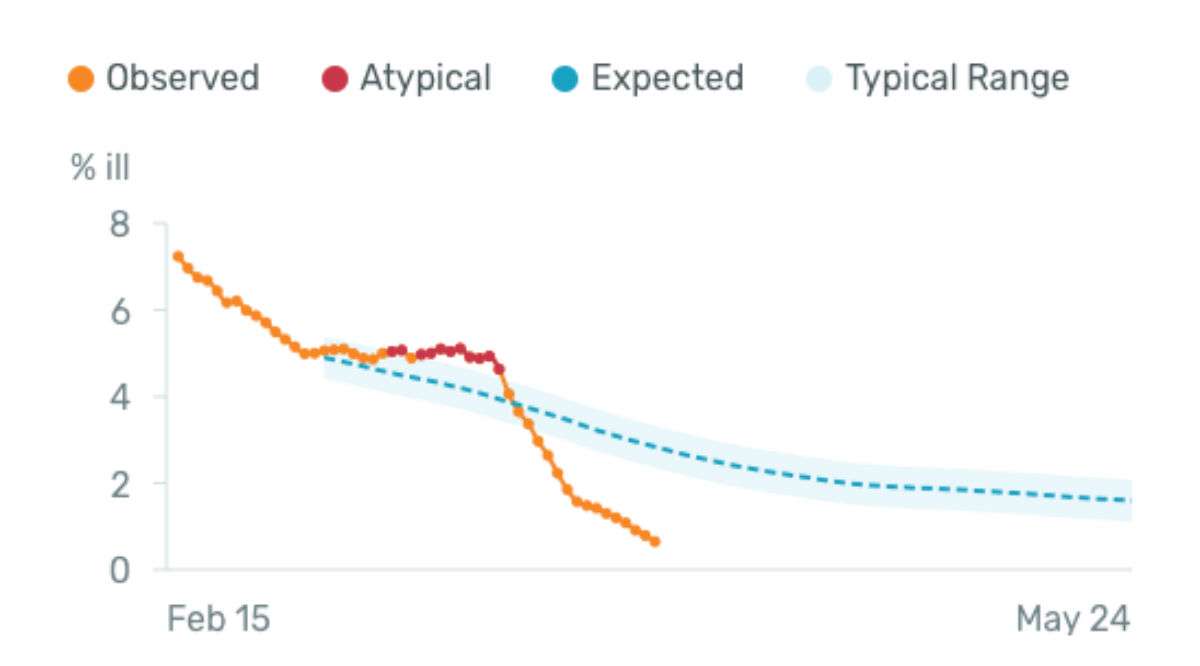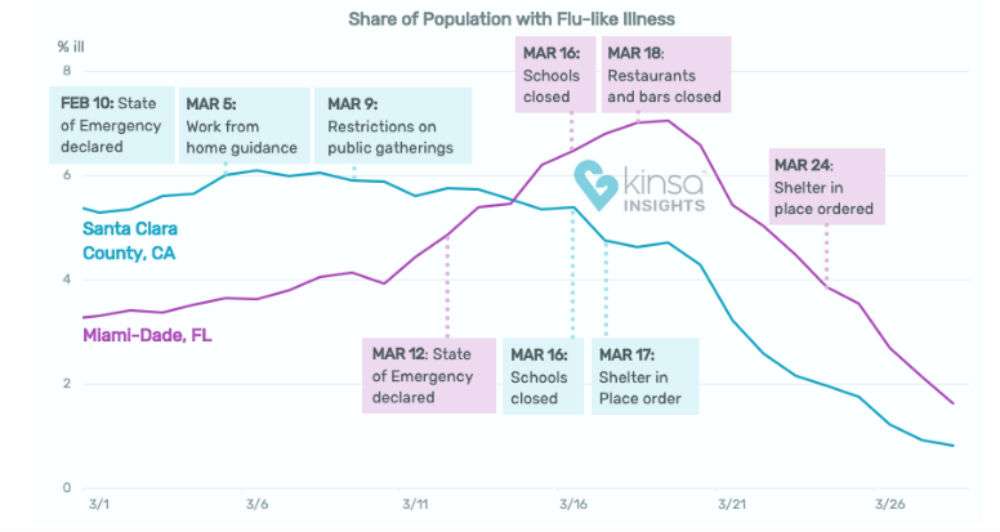U.S. Fever Trends Suggest COVID-19 Rates Could Soon Decline
"3 to 7 days after a stay-at-home order is enacted, fevers in that community start to drop."

The percentage of Americans suffering from fevers linked to influenza-like illnesses, including COVID-19, is trending strongly downward according to the U.S. Health Weather Map developed by startup Kinsa Health. The company tracks these trends using data voluntarily gathered daily from hundreds of thousands of users of its bluetooth connected thermometers. Previous data suggests that about 2.84 percent of the population should be experiencing fevers for April 5. The good news is that only 0.65 percent are running higher than normal temperatures currently.
The time series chart below compares Kinsa's observations of the influenza-like illness level in the U.S., in orange and red, against where that level was expected to be, in blue. You can see how that relationship has changed over the past few weeks.

Based on the data collected by his company, Kinsa founder and CEO Inder Singh argues that social distancing is working. "Keep staying home. You are saving lives," he writes. "Data from more than 1 million Kinsa thermometers tells the same story across the country: 3 to 7 days after a stay-at-home or shelter-in-place order is enacted, fevers in that community start to drop." The chart below shows how the differences in timing of social distancing policies in Santa Clara and Miami have affected fever trends in those jurisdictions.

COVID-19 cases and deaths are still rising because people who were unwittingly infected prior to the broader adoption of stay-at-home measures are now becoming symptomatic. If social distancing continues to be maintained, Singh expects diagnosed COVID-19 cases and deaths to peak and begin falling soon. "We are infecting each other less today than we were two weeks ago," he writes, "and this alone could save hundreds of thousands of lives."
A bonus is that social distancing policies are reducing not only novel coronavirus infections, but also those of other respiratory illnesses, including seasonal influenza and regular colds.
Already brewing in the background is the inevitable debate over whether social distancing and stay-at-home measures were actually necessary to blunt this pandemic. The main problem is that we don't live in the counterfactual world in which we did not go into lockdown. Proponents of social distancing will argue that such policies are the reason why hundreds of thousands did not die in the pandemic. Critics will point to the lower death and hospitalization rates as evidence against unwarranted alarmism. Looking at how the pandemic ultimately plays out in poorer countries with fragile health care systems, as well as in places where impoverished people can't effectively socially distance themselves, may sadly help adjudicate that dispute.


Show Comments (37)